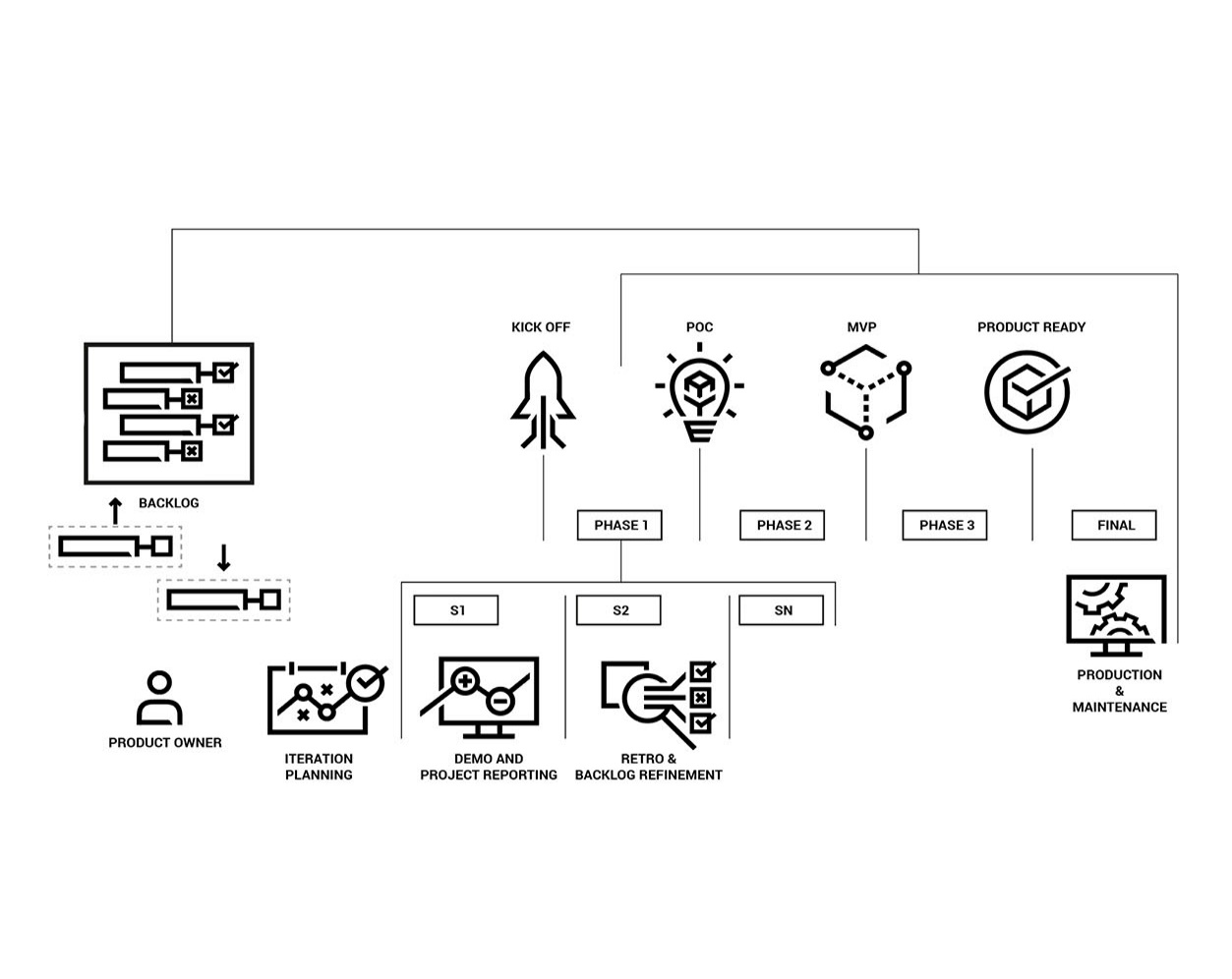I want to build an Internet of Things (IoT) product from scratch
The Challenge
You have a vision for a new innovative IoT or AI product, you’ve gathered initial funding, and now you need to build the first prototype. A promising prototype is key to securing further funding and providing proof of concept. Prototyping will also allow you to identify and amend issues before releasing it to the public.
The Solution
Building an IoT product from scratch can be daunting: there are so many decisions to be made and so many hurdles to overcome before you can release your prototype and MVP (Minimum Viable Product). We have years of experience supporting visionaries in this process and will mobilize our skills, knowledge, and drive to help you realize your dream. A journey of 1000 miles starts with the first step, and our first step is understanding the IoT value proposition of your product.
Our first step is to understand the goal of your product. For that, we use our framework of “IoT Value Drivers”, which describes the different ways IoT can create value for your customers. Aligning and understanding which IoT Value Drivers are most applicable and important will assist us in advising you how your IoT architecture may look like, which decisions need to be made, which corners can be cut, and how to prioritize and reduce scope during the development stage.
Our IoT Value Drivers are divided into two distinct categories, namely:
-
Operational Effectiveness
-
Strategic Differentiation
For more background information on the IoT Values drivers, please see our Blogpost:
To assess the scope of an IoT product, we use our “IoT Framework”. This framework outlines 5 areas for decision making for each part of the technology stack. Working through these in a structured way ensures that you will make integrated decisions that consider every part of the technology stack and reach the most optimal solution. Using the framework as a checklist allows us to identify any oversight and consult you on how to fix it.
For more background information on the IoT Decision Framework, please see our Blogpost:
-
How to make Internet of Things simple using an IoT Decision Framework
Once the scope of the project is defined, we will translate it into a technical, high-level architecture and roadmap. These documents will define the realization and milestones of your product and serve as a reference for measuring progress and success. In the section “How we work” we explain more about which processes we follow, which tools we use, and how communication and roles and responsibilities are set up.
We begin development in an agile way, according to the roadmap and high-level architecture. We tightly monitor and control the progress of the development, the costs, estimates for outstanding tasks, the risk management and decision and change management logs. Should it be required, this enables us to adjust our plans, scope and priorities on short notice without losing sight of the original plan.
read case studies
Partnerships















